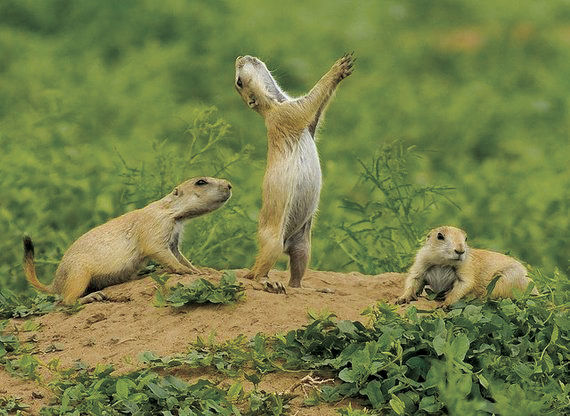Prairie dogs are highly intelligent mammals. Scientists are just beginning to decipher the meaning of their complex language and behaviors, such as the characteristic “jump-yip” routinely seen in black-tailed prairie dogs. Why do they do it? The behavior appears to be used for communicating with – and assessing the level of alertness of – other nearby prairie dogs. This information could inform them about how much to keep up their guard while foraging for food.
There are five prairie dog species and all are found only in North America: black-tailed, white-tailed, Gunnison’s, Utah, and Mexican prairie dogs. These stout, ground-dwelling rodents are sometimes considered pests. Yet they’re also recognized as influential “ecosystem engineers” and keystone species that significantly affect their surrounding environment in important ways.
Prairie dog populations are tied to the health of many other western wildlife species. One species that benefits from prairie dogs is the black-footed ferret, North America’s rarest land mammal, which depends on prairie dogs for 90% of its diet. This charismatic carnivore also relys on prairie dog burrows for shelter. Burrowing owls also use prairie dog burrows.
Several species of raptors also depend on prairie dogs and other ground squirrels for a large portion of their diet. Common large raptors in Castle Country in the spring and summer include Red-tailed Hawks, Northern Harriers, Great Horned Owls, and Golden Eagles.
Peregrine Falcons have also been known to catch prairie dogs.
Goshawks are found in this area, but they are usually in a forest environment.
Ospreys nest in this area, but their diet is mainly fish.
Common small raptors include Kestrels, Prairie Falcons, and Sharp-shinned Hawks but those species usually catch small birds or small rodents, as do small species of owls.
Many Western species’ health tied to prairie dogs

Prairie Dog
